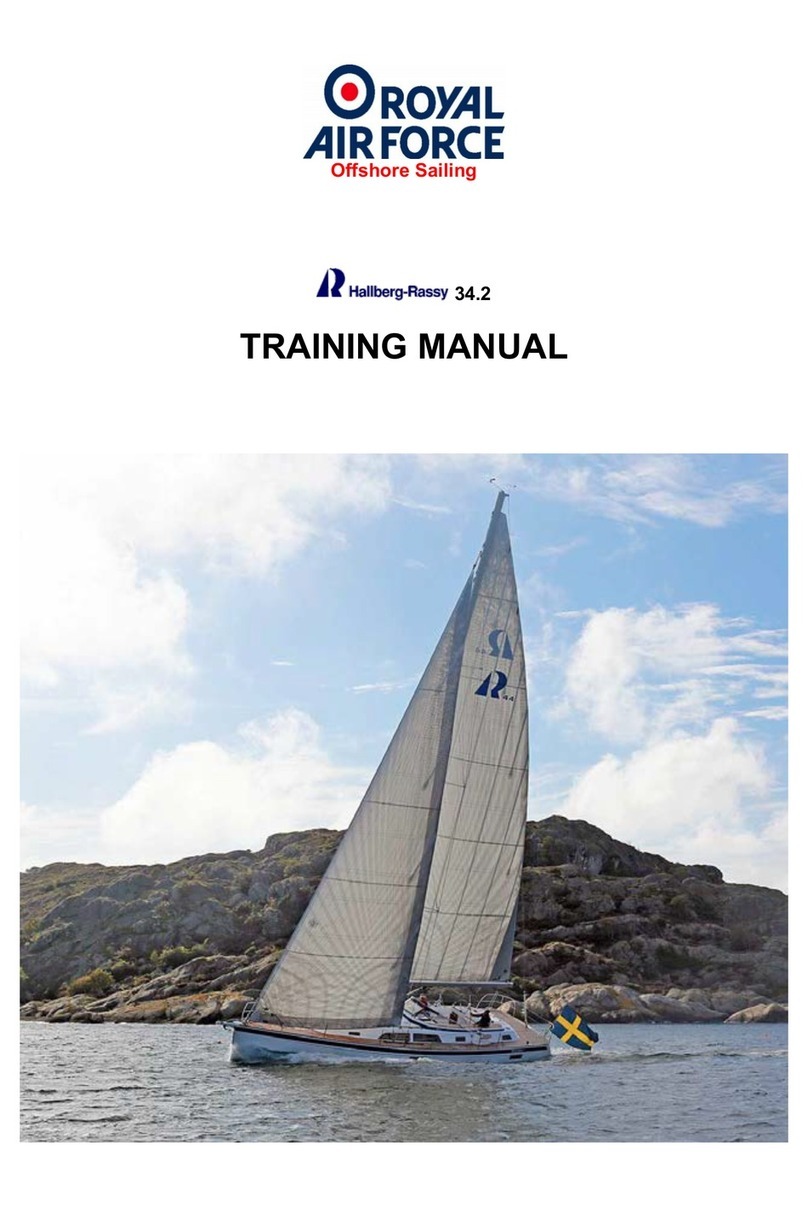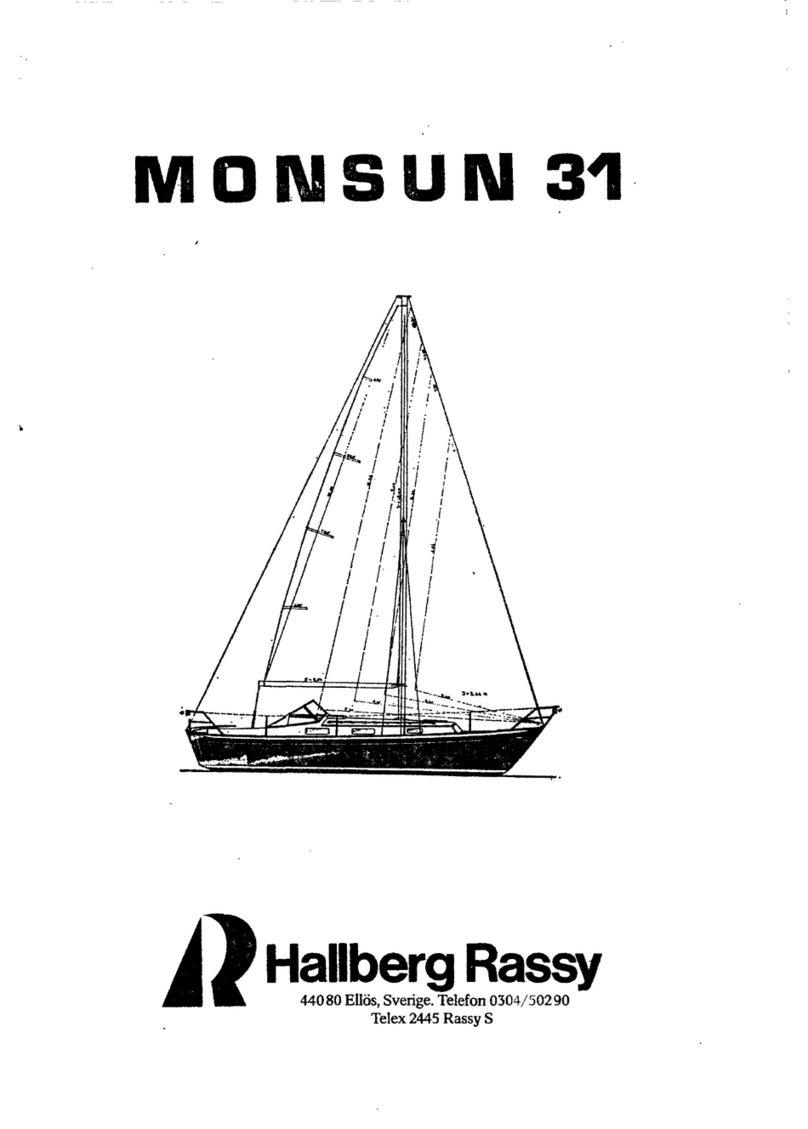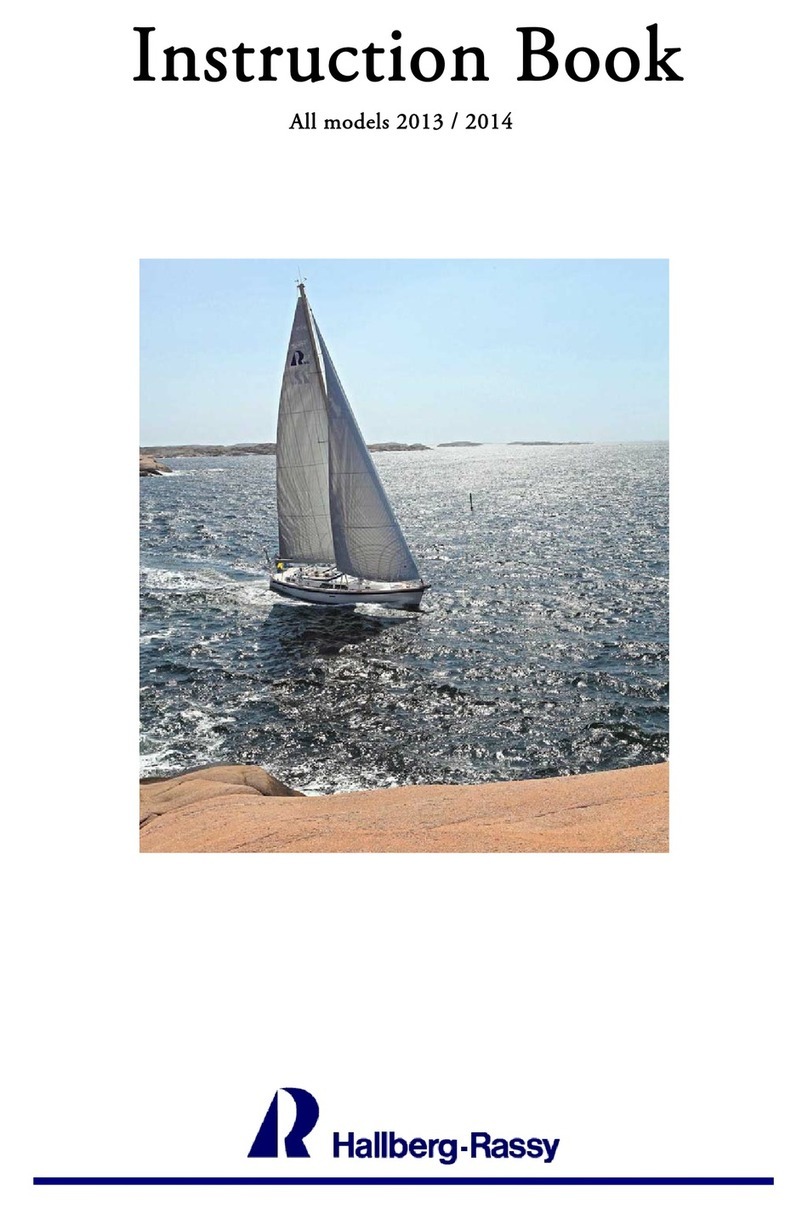
Mar 20
CHAPTER 1 - BATTERIES AND BATTERY SWITCHES
1. The HR yachts are equipped with separate domestic and start batteries located under
the lateral saloon seat amidships, forward of the saloon table. Both can be isolated by the
Battery Isolation Switches accessed from wooden door, under the inboard end of the lateral
saloon seat at the base of the mast post.
Battery switch compartment Battery master switches
2. Charging. Don't underestimate the time required to charge the batteries. Full
charge may take up to 15 hrs using the engine, dependant on electrical load, or overnight if
the yacht is plugged into shore power (charging is automatic. DO NOT adjust the charger
settings – irreparable damage can occur). The alternator on the main engine will give full
charge at 1300 rpm. The only volt metre is on the Furuno cockpit display; you will need to
find the correct page. As a minimum, this should be checked daily before sailing, once
shore power has been disconnected, ideally it should be checked and hourly when
completing the ship’s log. The voltage should not be allowed to exceed 14.2V and should
not be allowed to fall below 11.5V. If this occurs; charge the batteries as soon as possible.

































